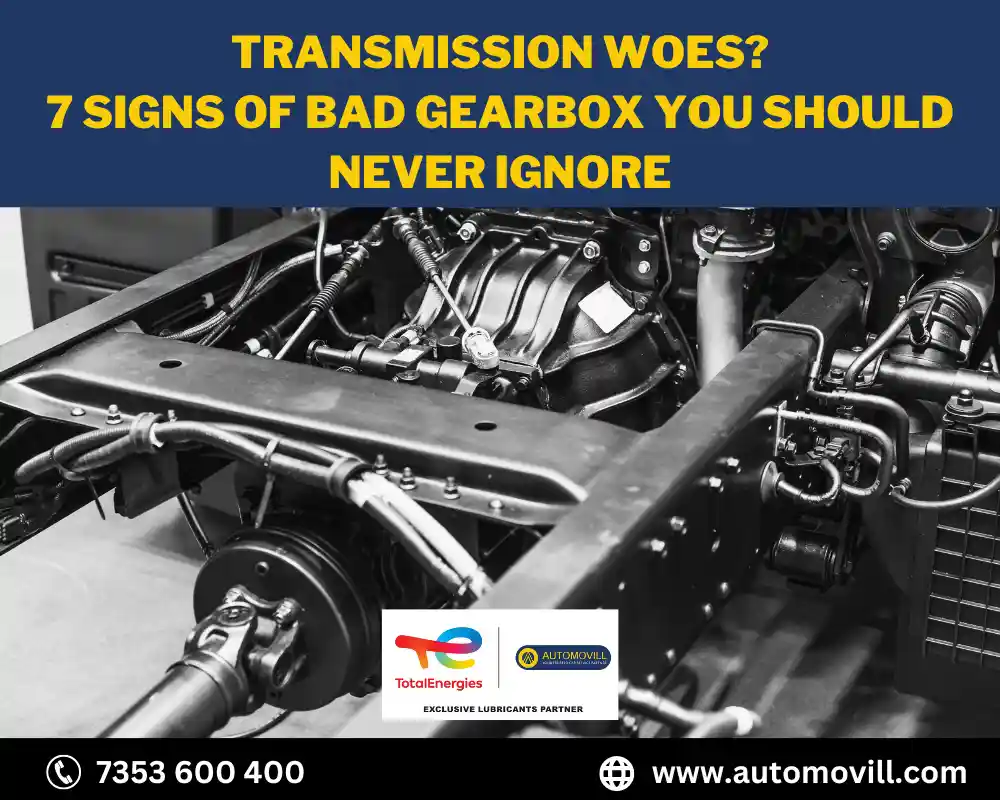
The gearbox is a crucial component of any vehicle that provides the power and torque from an engine to the wheels.
Gearboxes play a vital role in ensuring the power, speed and smooth driving experience.
However, like any mechanical part, gearboxes can experience wear and tear, leading to various issues.
In this blog, we will explore the signs of a faulty gearbox but before that let’s understand how the gearbox works.
How Does a Gearbox Work?
Before delving into the signs of a bad gearbox, it’s essential to understand how this mechanical marvel operates. A gearbox primarily functions to generate power from the engine to the wheels.
It accomplishes this through a combination of gears and shafts, which work together to alter the torque and rotational speed.
Here’s a simplified breakdown of how a typical gearbox works:
- Gears: The gearbox consists of different-sized gears that mesh together. The input gear, also known as the driver gear, is connected to the power source, while the output gear, or driven gear, is connected to the output device.
- Gear Ratio: Each gear has a specific number of teeth, determining its gear ratio. By changing gears, the ratio of teeth engaged alters, thereby changing the rotational speed and torque applied to the output device.
- Shift Mechanism: In manual gearboxes, a shift mechanism, such as a gear stick or paddle shifters, enables the driver to manually select the desired gear. Automatic gearboxes use a complex system of hydraulic mechanisms and electronic controls to shift gears automatically based on various factors like vehicle speed and engine load.
Signs of a Bad Gearbox
Now that we understand the basic workings of a gearbox, let’s explore the signs that indicate a potential issue with this essential component:
1) Grinding or Unusual Noise
A grinding or whining noise during gear changes or while the vehicle is in motion is often a sign of gear damage or improper gear engagement. This noise can indicate worn or damaged gears, bearings, or synchronizers.
2) Difficulty Shifting Gears
If you notice increased resistance or find it challenging to shift gears smoothly, it may indicate a problem with the gearbox. This could be caused by worn or damaged synchronizers, clutch issues, or problems with the shift linkage.
3) Slipping Gears
A slipping gearbox is characterized by a sudden loss of power or a feeling of the gears disengaging while driving. It can be caused by worn clutch plates or bands, insufficient transmission fluid, or a faulty torque converter.
4) Delayed Gear Engagement
When shifting from “Park” or “Neutral” to “Drive” or another gear, if you experience a delay or hesitation before the gear engages, it could indicate a problem with the gearbox, such as a worn clutch or a malfunctioning solenoid.
5) Fluid Leaks
Transmission fluid leaks can occur due to worn seals or gaskets, which can lead to insufficient lubrication and potential gearbox damage. Look for red or brown fluid stains underneath the vehicle.
6) Overheating
Excessive heat can cause gearbox problems. If you notice a burning smell or see smoke emanating from the transmission area, it could indicate overheating, possibly due to low fluid levels, a faulty cooler, or a blocked vent.
7) Warning Lights
Modern vehicles are equipped with onboard diagnostic systems that monitor various components, including the gearbox. If the “Check Engine” or “Transmission” warning light illuminates on the dashboard, it’s essential to have the gearbox inspected by a mechanic.
Conclusion
The gearbox plays a crucial role in the smooth and efficient operation of various mechanical systems. Recognizing the signs of a bad gearbox can help prevent further damage and costly repairs.
If you experience any of the aforementioned signs, it is advisable to consult a qualified automobile mechanic to diagnose and address the issue promptly.
Regular maintenance, such as fluid changes and inspections, can also help prolong the lifespan and performance of your gearbox. By understanding how the gearbox works and being aware of potential problems, you can ensure a reliable and trouble-free driving or operating experience.
